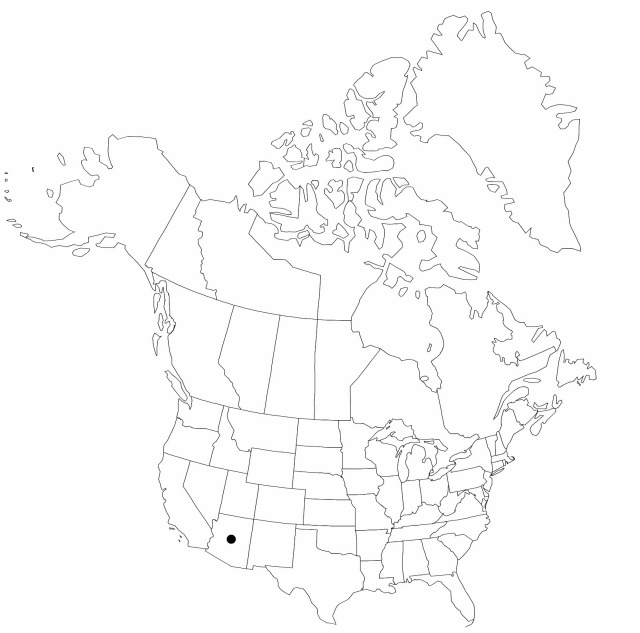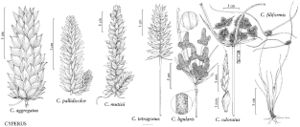Difference between revisions of "Cyperus mutisii"
Galapagos Veg., 53. 1854.
imported>Volume Importer |
imported>Volume Importer |
||
| Line 92: | Line 92: | ||
|publication year=1854 | |publication year=1854 | ||
|special status=Illustrated | |special status=Illustrated | ||
| − | |source xml=https:// | + | |source xml=https://bitbucket.org/aafc-mbb/fna-data-curation/src/2e0870ddd59836b60bcf96646a41e87ea5a5943a/coarse_grained_fna_xml/V23/V23_327.xml |
|genus=Cyperus | |genus=Cyperus | ||
|subgenus=Cyperus subg. Cyperus | |subgenus=Cyperus subg. Cyperus | ||
Latest revision as of 20:39, 5 November 2020
Herbs, perennial, cespitose, rhizomatous. Culms trigonous, (20–)30–120 cm × 1.4–3.5 mm, glabrous or occasionally with scattered prickles on distal angles. Leaves 2–4(–6), inversely W-shaped, 10–60(–70) cm × (2–)4–13 mm, margins and midribs scabridulous or glabrous. Inflorescences: spikes (1–)3–6, narrowly cylindric, 1–4(–6) cm × 5–11 mm; rays 0 or 3–6, 2–23 cm; bracts 5–8, ascending at ± 45°, inversely W-shaped, (4–) 14–40(–46) cm × 1–12 mm; rachilla deciduous, wings persistent, 0.3–0.5 mm wide. Spikelets 35–100, oblong-ellipsoid, ± terete, elliptic in cross section, 3–7 × (0.9–) 1.3–2 mm; distal spikelets spreading or ascending; floral scales persistent, 1–2(–5), appressed, becoming clear at maturity, laterally brownish to reddish brown, medially greenish, laterally 3–5-ribbed, medially 3-ribbed, often erose at maturity, ovate to elliptic, 2.2–3.2 × 1.5–2.1 mm, apex obtuse. Flowers: anthers 0.6–0.8 mm; styles 0.4–0.8 mm; stigmas 1.2–2.2 mm. Achenes brown to reddish brown, sessile, broadly ellipsoid, slightly dorsiventrally flattened, 1.5–1.8 × 0.7–0.9(–1) mm, apex obtuse, apiculate, surfaces papillose to puncticulate.
Phenology: Fruiting summer–fall (Jun–Nov).
Habitat: Clearings in montane forests, canyons
Elevation: 500–1500 m
Distribution

Ariz., Mexico, Central America, South America.
Discussion
Cyperus mutisii is recognized by its cylindric spikes borne digitately at the ends of the rays and its short, plump spikelets. As spikelets mature, the floral scales, having erose margins contrasting with the brownish sides, beome useful distinguishing features.
Selected References
None.
